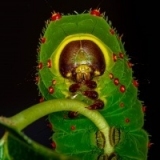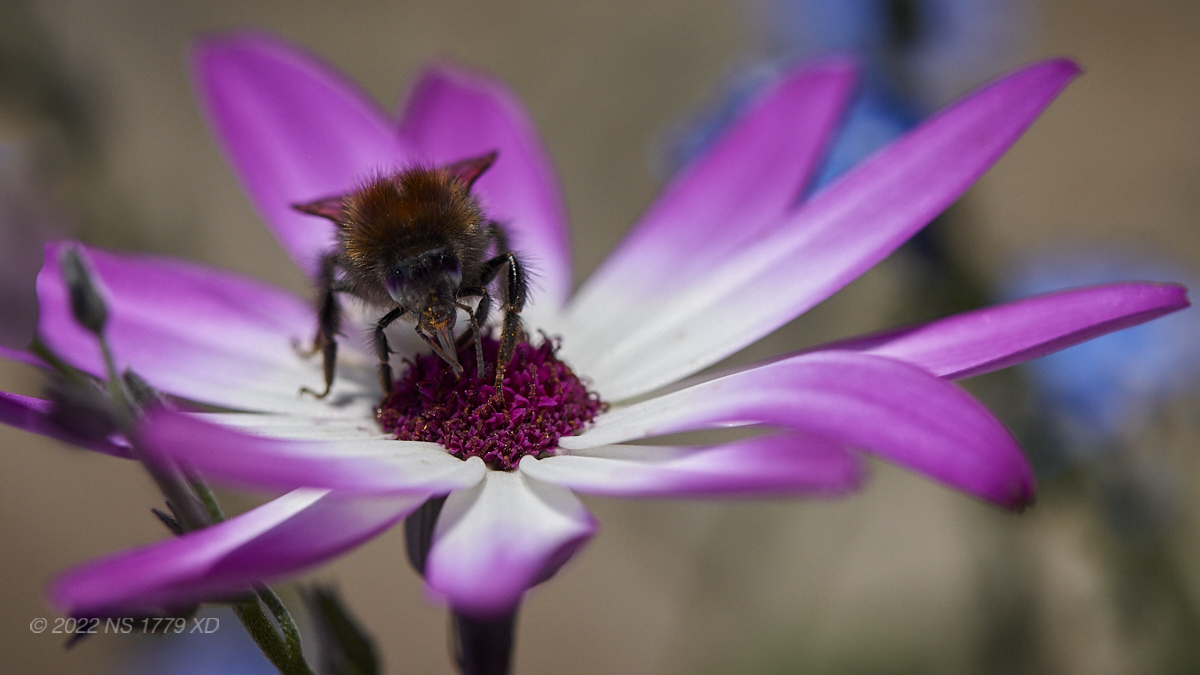- Forum
- General Discussion | Introductions | Off Topic Forum
- Photography General Discussion
- Photographing bees on flowers?
Photographing bees on flowers?
-
 Topic Author
Topic Author
- Photo Amigo
- Lone Wolf
- Followers: 62
- Posts: 206
-
Points:
3821
Post #736768
If the 85mm works, why do I need to get 100mm macro lens? 15mm extra focal length?
-

- CharleyL
- Photography Hooked
-
- Canon 90D, (2) Canon 77D, Fuji HS20 EXR, Still have my Sony MVC-FD95
- Followers: 71
- Posts: 912
-
Points:
34968
Post #736782
Charley
-

- Screamin Scott
- Moderator
-
- Nikon D610, Nikon D7100, Nikon D300, Olympus OMD E-M5 MarkII, Olympus OM-D E-M10, Olympus Pen E-P3 + film SLR's
- Followers: 1384
- Posts: 6855
-
Points:
39981
Post #736860
-

- Nikon Shooter
- Oh Wise One
-
- 3S 3X 810 850
- Followers: 197
- Posts: 13795
-
Points:
88932
Post #736862
closer focusing distance, only part of the benefits.
I also own the 200mm macro and that give me more distance
from the subject so I have less chance to block light that could
come into the scene.
Light is free… capturing it is not!
-

- Nikon Shooter
- Oh Wise One
-
- 3S 3X 810 850
- Followers: 197
- Posts: 13795
-
Points:
88932
-

- Screamin Scott
- Moderator
-
- Nikon D610, Nikon D7100, Nikon D300, Olympus OMD E-M5 MarkII, Olympus OM-D E-M10, Olympus Pen E-P3 + film SLR's
- Followers: 1384
- Posts: 6855
-
Points:
39981
Post #736864

Or this?

-

- EtherArts
- New Kid On The Block
-
- Followers: 49
- Posts: 16
-
Points:
1486
-
 Topic Author
Topic Author
- Photo Amigo
- Lone Wolf
- Followers: 62
- Posts: 206
-
Points:
3821
Post #737049
-

- Nikon Shooter
- Oh Wise One
-
- 3S 3X 810 850
- Followers: 197
- Posts: 13795
-
Points:
88932
Post #737051
Photo Amigo wrote: SOOOOOOO cool! Love the bee shots, super motivated guys. Now let me ask you this, did you take those with 100/ 105mm? Seriously a 200mm macro? Could the same thing be accomplished with a 100mm with extension tube on it?
Mine was taken with the 105 macro. Given situations require some
safety distance from the subject (rattle snakes!) while others more
distance so you don't trow shadow on the scene (sometimes both)
then the 200 mm is the needed tool.
Extension tubes will not increase the focal length but rather shorten
the MFD —minimum focusing distance — for even closer takes.
Have a good time!
Light is free… capturing it is not!
- Forum
- General Discussion | Introductions | Off Topic Forum
- Photography General Discussion
- Photographing bees on flowers?
Latest Reviews
The Canon EOS R100 is an entry-level mirrorless camera introduced in 2023. But just because it’s an entry-level camera doesn’t mean it’s a bare-bones camera. Find out why in this review!
Nikon’s retro-looking Nikon Zfc is anything but retro. Under its classic body is a host of features and amenities that make it a worthwhile compact mirrorless camera for 2024.
The Canon EOS R50 is one of the newest R-system cameras from Canon. Is it worth your money? Find out all the details you need to know in this comprehensive review.
The Sony FE 70-200mm f/2.8 GM OSS II is Sony’s flagship mirrorless zoom lens. As such, it’s loaded with features and has a top-shelf build quality that makes it a top pick!
Forum Top Posters
-
1Scotty 5 posts
-
2Foggy 4 posts
-
3TCav 4 posts
-
4No Show 3 posts
-
5CaptNemo 2 posts
-
6Roger Lang 2 posts
-
7Otto F 2 posts
-
8Fitch 2 posts
-
9Kenta 2 posts
-
10Pork Express 2 posts
Latest Articles
The Insta360 has one of the best lineups of action cams and 360-degree cameras. With these Insta360 accessories, you can elevate your photography and videography game!
Creating impactful photos of landscapes depends on many factors, not the least of which is your talent behind the lens. This guide explores other elements required for the best product.
The Canon EOS R100 is an entry-level mirrorless camera introduced in 2023. But just because it’s an entry-level camera doesn’t mean it’s a bare-bones camera. Find out why in this review!
Are you ready to upgrade your camera? Before buying new, you might consider the value of purchasing used gear to save money.
The Olympus OM-D E-M10 Mark IV is a micro four thirds camera released in 2020. It’s an entry-level system along with the OM-D E-M5 Mark III. Use this guide to determine which one is best for you!
Blue hour photography might not be as well known as golden hour photography, but it is every bit as good a time to create epic images of landscapes. Learn how in this quick tutorial!
Nikon’s retro-looking Nikon Zfc is anything but retro. Under its classic body is a host of features and amenities that make it a worthwhile compact mirrorless camera for 2024.
Moving from taking snapshots of your dog to creating beautiful images doesn’t have to be that difficult! Use the tips outlined in this dog photography guide, and you’ll get better results in no time.
















